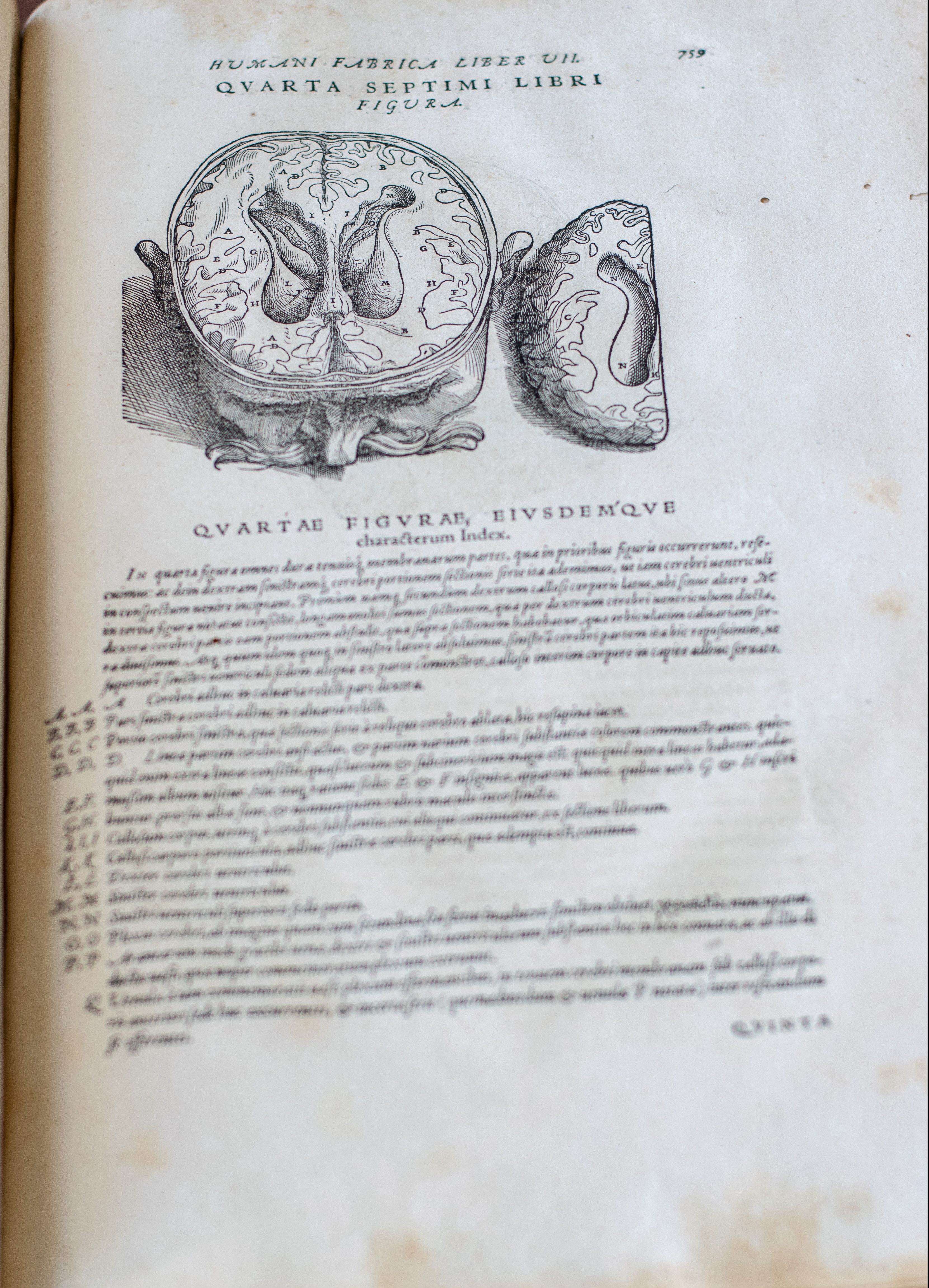De Humani Corporis Fabrica Libri Septem



Andreas Vesalius (1514 –1564) stands at the beginning of serious anatomical research and his study of the brain is particularly significant for its inclusion of 25 illustrations that attempt to represent the three-dimensionality of the organ. Born in Brussels, the son and grandson of medical men, Vesalius later became gained a post at the University of Padua, before becoming physician to the Emperor Charles V. At the age of 29, he published On the Fabric of the Human Body (De humani corporis fabrica), a seven-volume study of human anatomy with over 200 detailed woodcuts.
While Vesalius drew some of these images himself, the majority were done by an artist from Titian’s workshop in Venice, some 30 miles from Padua. This artist represented the human cadaver as idealized figures in the rolling Paduan landscape, in stark contrast to the later realism of anatomists like Govard Bidloo. Book 7 is devoted to the brain, which is usually depicted within the skull, either as cross-sections at different depths or as individual brain structures such as the cerebellum. One series of dissections presents a gradual uncovering of brain anatomy, with the same male face represented with a gradual growth of beard. Our copy, a second edition, was published in 1555.
